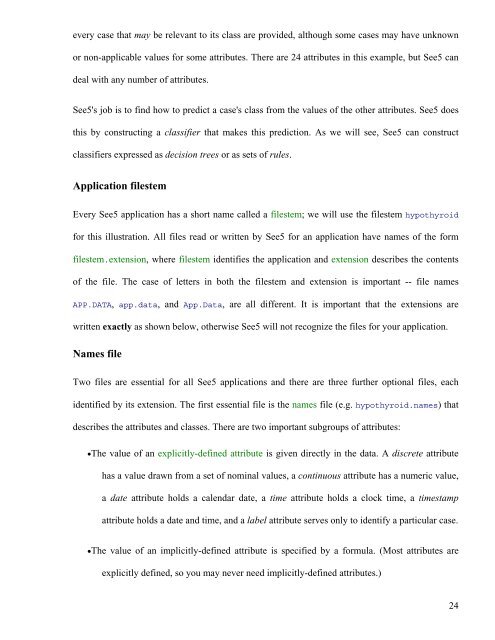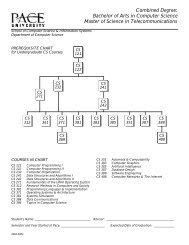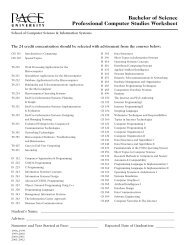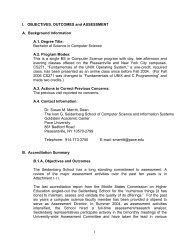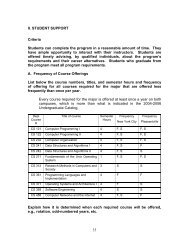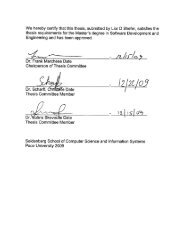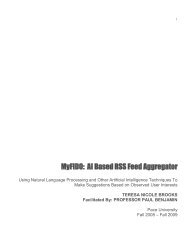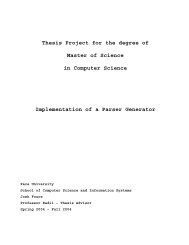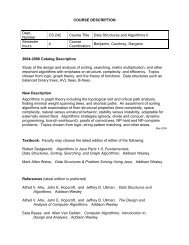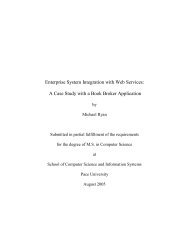Web Analytics Understanding user behavior and ... - pace university
Web Analytics Understanding user behavior and ... - pace university
Web Analytics Understanding user behavior and ... - pace university
Create successful ePaper yourself
Turn your PDF publications into a flip-book with our unique Google optimized e-Paper software.
every case that may be relevant to its class are provided, although some cases may have unknown<br />
or non-applicable values for some attributes. There are 24 attributes in this example, but See5 can<br />
deal with any number of attributes.<br />
See5's job is to find how to predict a case's class from the values of the other attributes. See5 does<br />
this by constructing a classifier that makes this prediction. As we will see, See5 can construct<br />
classifiers expressed as decision trees or as sets of rules.<br />
Application filestem<br />
Every See5 application has a short name called a filestem; we will use the filestem hypothyroid<br />
for this illustration. All files read or written by See5 for an application have names of the form<br />
filestem.extension, where filestem identifies the application <strong>and</strong> extension describes the contents<br />
of the file. The case of letters in both the filestem <strong>and</strong> extension is important -- file names<br />
APP.DATA, app.data, <strong>and</strong> App.Data, are all different. It is important that the extensions are<br />
written exactly as shown below, otherwise See5 will not recognize the files for your application.<br />
Names file<br />
Two files are essential for all See5 applications <strong>and</strong> there are three further optional files, each<br />
identified by its extension. The first essential file is the names file (e.g. hypothyroid.names) that<br />
describes the attributes <strong>and</strong> classes. There are two important subgroups of attributes:<br />
•The value of an explicitly-defined attribute is given directly in the data. A discrete attribute<br />
has a value drawn from a set of nominal values, a continuous attribute has a numeric value,<br />
a date attribute holds a calendar date, a time attribute holds a clock time, a timestamp<br />
attribute holds a date <strong>and</strong> time, <strong>and</strong> a label attribute serves only to identify a particular case.<br />
•The value of an implicitly-defined attribute is specified by a formula. (Most attributes are<br />
explicitly defined, so you may never need implicitly-defined attributes.)<br />
24


